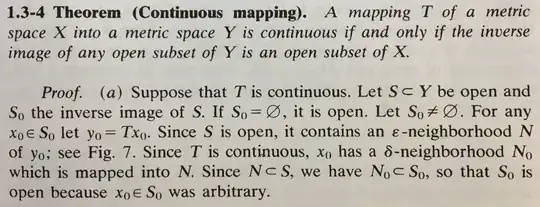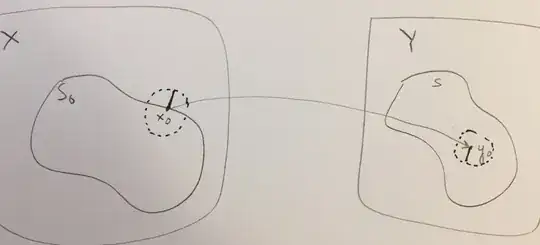The $x_0$ drawn by you in the question is NOT an interior point (but a limit point). If you recall the definition of an open set (from a metric space perspective), it needs all points of the set to be interior points.
One additional note: this theorem helps to generalize the definition of continuous mapping from metric spaces into more generic topological spaces, where you no longer have concept of distance yet still have open sets.
UPDATE: so the question is actually about the other direction of the theorem.
Now let's pick any point in $X$, calling it $x_0$, $f(x_0) \in Y$. Let's say $f$ is continuous at point $x_0$, then $\forall \epsilon >0$, there exists $\delta_{\epsilon} > 0$, s.t. $\forall x \in A=\{x: |x - x_0| < \delta_{\epsilon} \}$, we have $B = f(A) \subset \{y: |y-y_0| < \epsilon\} \subset Y$.
Now you concern is: Why the point cannot be like what you drew (let's call it $x'$)?. Well, then for that $x'$ you drew, we cannot find a $\delta >0$ such that the above condition for continuity satisfies, and thus, $f$ is NOT continuous at the point $x'$ that you drew.

